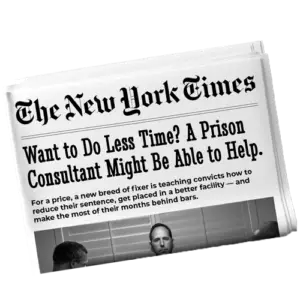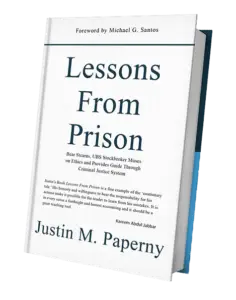This post includes insights from our New York Times article about Hugo Mejia. You can read the full article [here]. It continues the themes from earlier blogs: If you’ve already pleaded guilty, now is when the real work begins. And it starts well before you show up for sentencing.
By the time you walk into the courtroom for sentencing, the judge already knows what they’re going to do. Not always down to the exact number. But close.
I’ve heard defendants say, “I just need to make a strong statement when I get up there.” No. That’s not how this works.
Your sentence won’t be based on what you say at the podium. It will be based on what the judge reads in your pre-sentence report. And you don’t get to explain it once it’s written.
In Hugo Mejia’s case, the judge didn’t just talk about the offense. He brought up Hugo’s military service, his health problems, his family history. That wasn’t a coincidence. That information made its way into the file. And the only reason it did was because Hugo spent time making sure it was documented—well before sentencing.
Most defendants don’t do that. They wait. They think the courtroom is the big moment. So they sit there while their lawyer talks, then they make a short apology, maybe mention their family. And then they get the high end of the guidelines and don’t understand why.
The judge only saw the crime—because that’s all they put forward. They never gave the court a full picture of who they were or what they’d done to make things right.
The pre-sentence report is what gives the judge permission to see you as more than the crime. And it doesn’t happen by default. You have to make sure the information gets there. Not in a speech. Not in a letter. In the official record.
Here’s the part most defendants miss: judges don’t go looking for reasons to go below the guidelines. They go with what’s in front of them. If all they have is the government’s version of the crime, a probation report that says you were vague, and a few character letters, that’s what they’ll base their sentence on.
You’re not going to talk your way out of it the morning of court.
But if your report tells a clear story—if it includes honest background, genuine remorse, and shows you’re not still trying to defend what you did—then you’re giving the judge something else to work with.
In Hugo’s case, the judge actually said in open court that he saw the effort. That kind of acknowledgment doesn’t happen because someone gives a moving statement. It happens because the defendant spent time preparing—gathering records, writing clearly, and making sure the report told the full story before the hearing.
You don’t get a second chance at this. Once the report is submitted, it becomes part of your permanent record with the court and the Bureau of Prisons. It affects facility placement, RDAP, home confinement, everything.
So here’s what I ask clients: if the judge had to make a decision based only on your pre-sentence report—no letters, no speech, no courtroom performance—how would that go?
If you don’t like the answer, you’ve still got time to fix it. But not much. Every day you wait, you lose ground.
Every Tuesday at 11AM Pacific / 2PM Eastern, I walk through how these reports actually work—how judges read them, what BOP staff look for, and what you can do to make sure the file reflects who you are now. No sugarcoating. No theory. Just the reality of what decides your sentence. You’re invited.
Justin Paperny



